Stonor Park: A 5,000-year-old site, an 800-year-old garden, and a magnificent 21st century house
From their first mention in the late 14th century, the gardens of Stonor Park in Henley-on-Thames — home of Lord and Lady Camoys — have gone through as many ups and downs as the family that still lives there. Today, after decades of careful work, they are in top form, finds James Alexander-Sinclair. Photographs by Jason Ingram.


Stonor family has been in this lovely bit of the Chiltern Hills for an extremely long time. The drive winds through ancient trees and up steep grassy slopes (which afford excellent, albeit hazardous and hair-raising, sledging opportunities) until the house and chapel are revealed. Quite a lot of country houses have chapels: Stonor Park goes one better. Not only does it boast a remarkable example, but it also possesses an ancient stone circle, around which pagans frolicked about 5,000 years ago.
The chapel was built in the 13th century (using one of the ancient stones as a foundation) and has been in use as a Catholic chapel ever since. If you remember that for at least 250 years of that period Catholics were not exactly encouraged (and at times hounded), then that shows pretty extraordinary commitment to faith and house. There are not many advantages to a couple of centuries of persecution and crippling fines, but it does mean that Stonor Park retains a great deal of its original character. No billionaire ancestors to demolish chunks and build Gothic extensions; instead, it is a house that has gently and stoically evolved over the past 800 years.
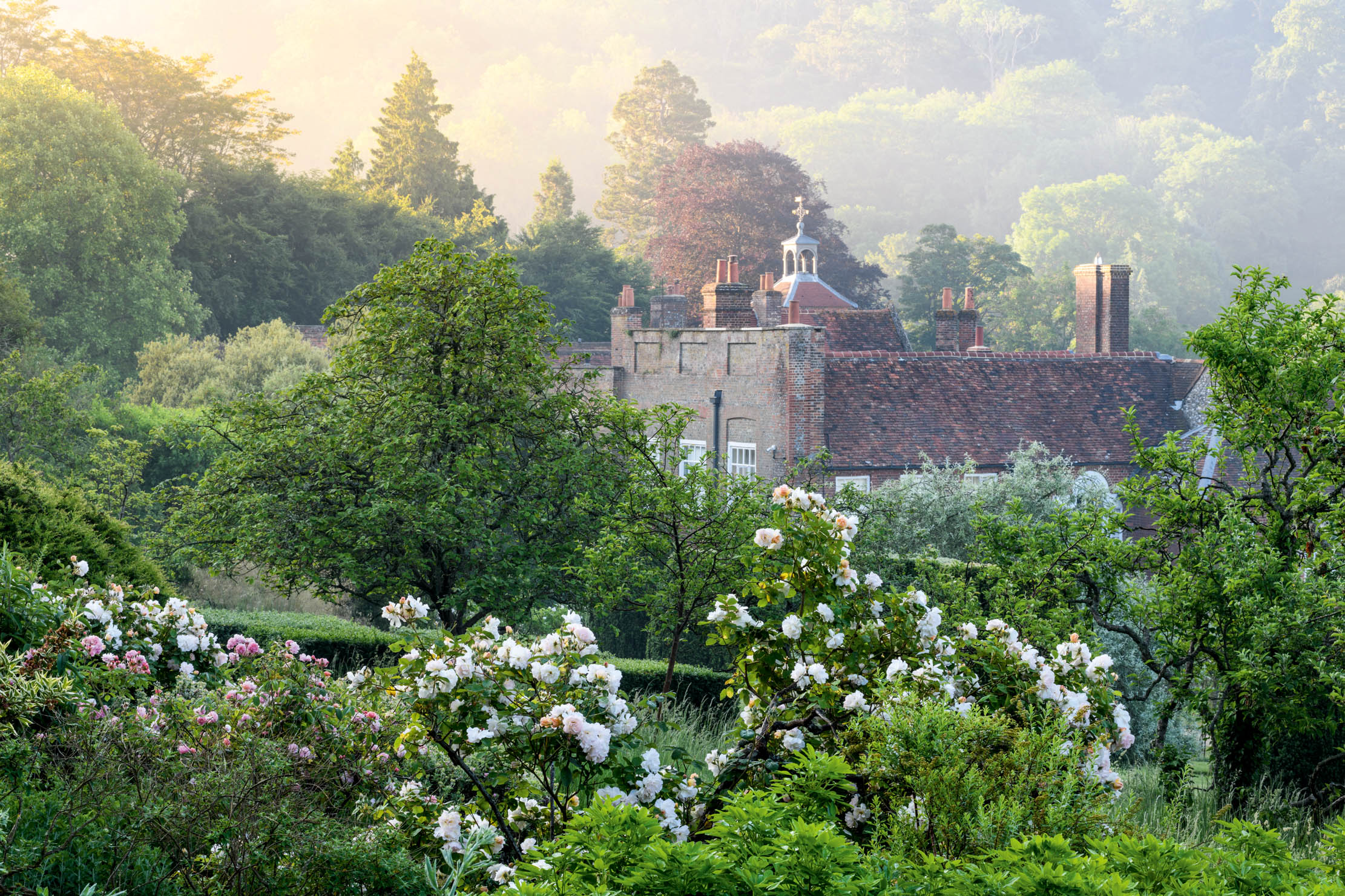
Like everything at Stonor, the gardens have a lot of history — the first record of a garden on this site occurs in the late 14th century, when there is mention of new spaces, fruit training and the creation of smaller enclosed gardens around the house. During the 17th century, ‘upper and lower courts’ had been created to the south and energetic tree planting continued in both gardens and parkland. Fast forward to Victorian times, when the family was not immune to the influx of new plants imported from all corners of the Empire — American natives, rhododendrons, conifers, peaches and pineapples.
In the 1930s, the two pools that command the pleasure garden today were converted from existing greenhouse irrigation tanks and joined by the use of ‘fashionable’ crazy paving (another trend awaiting 21st-century rediscovery) to create an elegant terrace. Come the 1950s, a mass of roses, water lilies and iris were planted, but, soon afterwards, the gardens went into a steep decline.
In 1978, Lord and Lady Camoys returned to the house. The family had moved out during the Second World War (when the house was let to the National Benzole Company) and there were all sorts of shenanigans in the post-war period when times were hard. As a result, they moved into a house that was not in the best condition, with a garden where lost glories had been conquered by ground elder and couch grass. The original layout consisted of a pleasure garden and (unsurprisingly) a massive kitchen garden, but it had been simplified over the years.
"The place feels comfortable, settled and at peace with itself, no matter what turmoil there is in the rest of the world"
The work involved in wrenching the garden back from the depredations of disuse to the calm and interesting place it is today should not be underestimated. Imagine, for a moment, the challenges of taking on this long neglected garden and, at the same time, juggling a handful of small children, a houseful of builders, a husband toiling in the city, trying to keep the roof in good repair and a curious public wandering through the drawing room on open days. Such was the situation in which Elisabeth Camoys found herself when she became châtelaine of Stonor Park.
Taking inspiration from a 1686 painting that hangs in the house showing the walled garden divided into a regular grid pattern, she transformed and redesigned the gardens. The majority of the structural plants were placed by her — many of them nurtured from seedlings and cuttings. The next generation stepped up in 2016, when the current Lord Camoys moved in with his young family. His wife, Ailsa, took over the day-to-day running of the garden (working closely and affectionately with her mother-in-law) and has both preserved and progressed the planting, initially with the help of the legendary Chris Marchant (formerly of nearby Orchard Dene nursery).
Exquisite houses, the beauty of Nature, and how to get the most from your life, straight to your inbox.
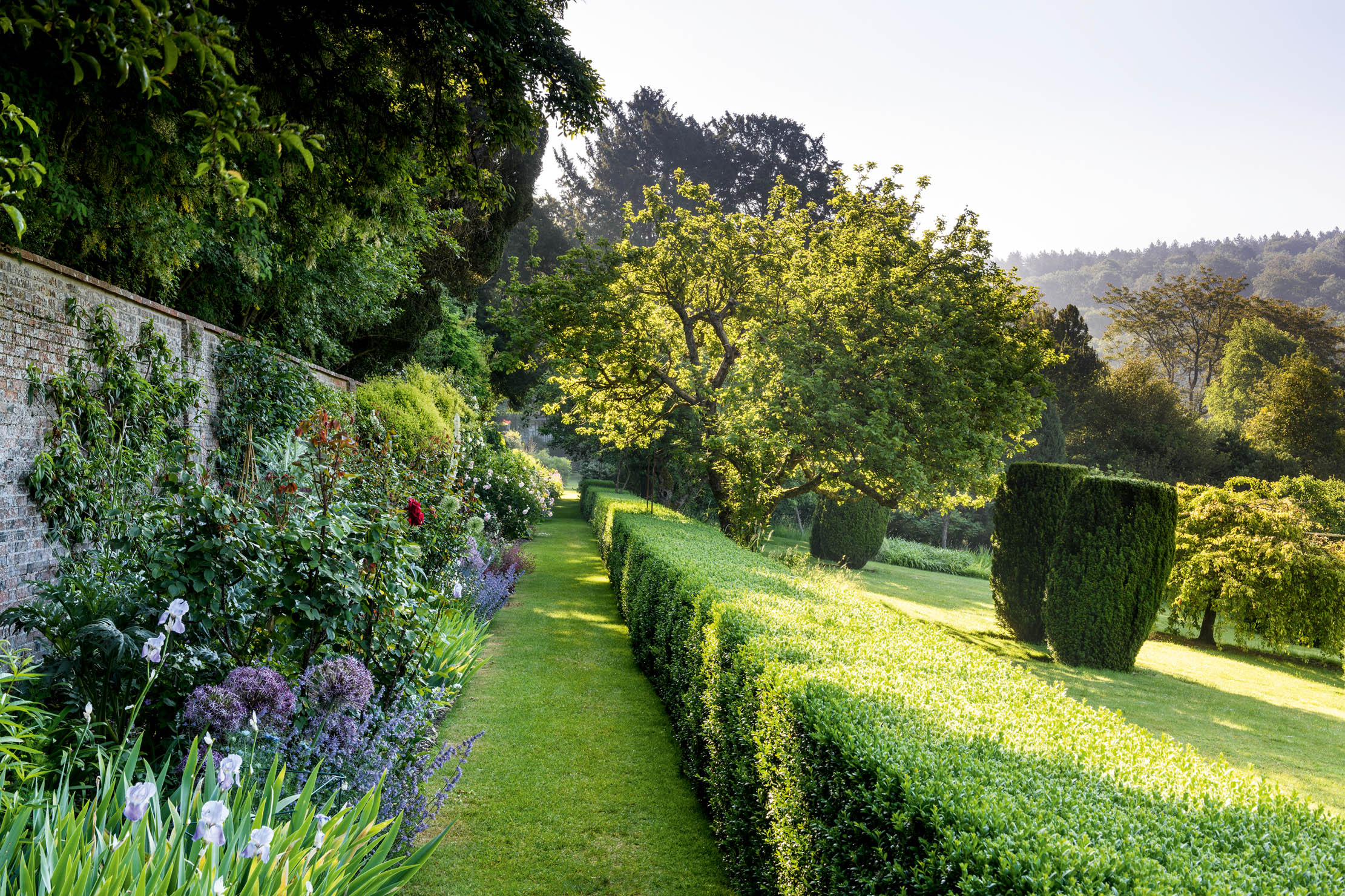
Ailsa trained at the Inchbald School of Design and worked alongside the great designers Tom Stuart-Smith, Todd Longstaffe-Gowan and Jinny Blom, so she knows her onions and the work that she has done (together with her sensational and ever-cheerful head gardener Catherine Stanger) means that this is a garden that simply keeps getting better.
Today, the garden is divided roughly into two large areas separated by two strips of mature woodland. Walking out of the house, you look up the hill across the sweeping lawn towards the two 1930s ponds. Interestingly, because of the topography of the park, the house seems almost cosy from this side, as it has relaxed into the hill and appears to be only one storey high. To the right is a deep shrubbery leading to a handsome Japanese summerhouse (built by the 5th Lord Camoys). On the left of the lawn stand a lilac walk, wild box, magnolia and a huge Rosa ‘Kiftsgate’ that hangs louchely from a vast yew — in summer, it sparkles with a cumulus of white flowers.
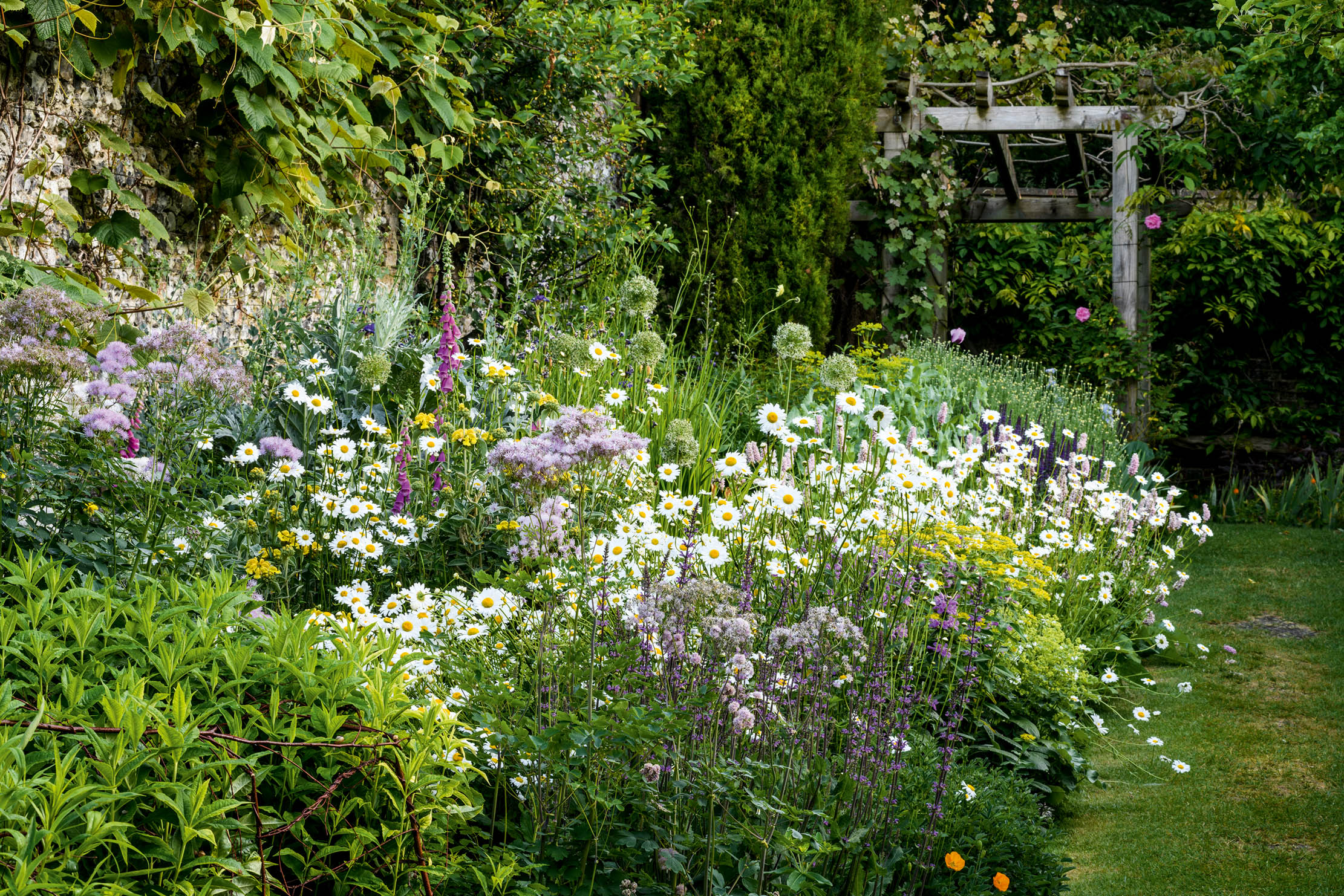
Having climbed the steps and reached the park wall, the long borders that constitute the melody of the garden spread out to either side of you. This is Elisabeth, Lady Camoys’s pièce-de-resistance — an almost 400ft-long border of repetition and revelation — roses, irises, peonies, a cherry trained against the wall, another rose, a phygelius, some penstemons. A good flowerbed should have moments of heart-quickening allegro contrasting with stretches of soothing adagio: this has all that in barrow loads. Among the classics, Ailsa has added unexpected surprises: blocks of Veronicastrum lavendelturm, architectural Cynara cardunculus and clusters of sanguisorba. These inject a spice of modernity to the borders that is most obvious in the far west ones, which Ailsa planted in 2016 using a collection of different plant combinations found elsewhere in the gardens.
From here, you look down — ideally from the vantage point of a bench under an arch of Rosa ‘Albéric Barbier’ — the avenues of Irish yew that divide the Old Kitchen Garden. To either side are large squares of shrub planting surrounded by areas of long grass into which Lady Camoys planted bulbs — camassia, alliums and narcissi. Ailsa added the cherry-red Tulipa ‘Jan Reus’, which adds zip to the proceedings. There is also a sensational view from here across the park to the steep hill opposite, where deer graze among mature trees.
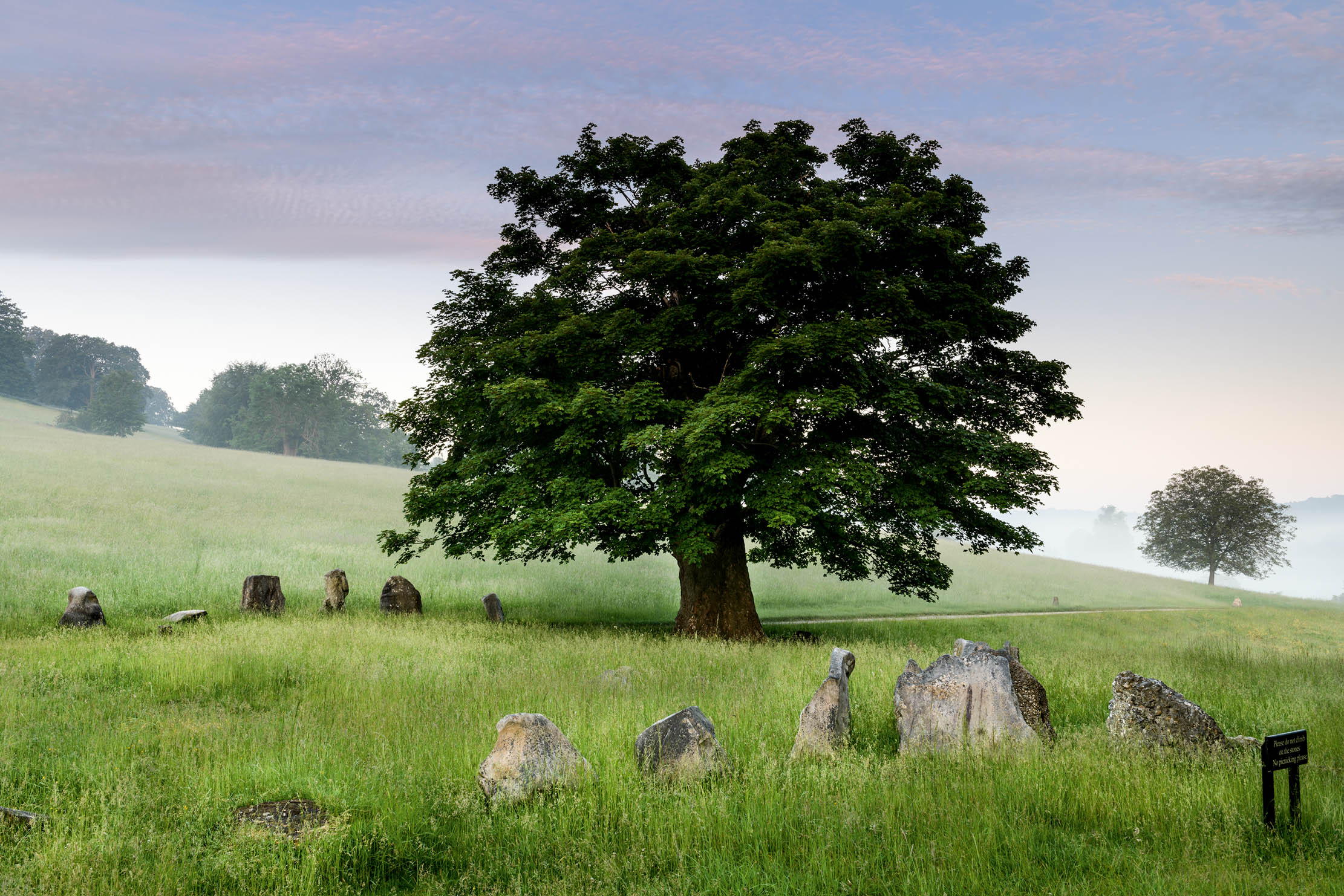
No decent garden is ever finished and team Stonor has plenty in its sights: trees to maintain, plants to plant, improvements to plan, vegetables to grow and pots to propagate. There is talk of a new-look laburnum walk, planting the trees in the park so that they reach over the wall to arch elegantly across the path. At one point in the 18th century, there was an octagonal seat at the very top of the garden (a couple of stone pillars remain patiently waiting among the trees), which the team is keen to restore.
There is no rush; I am confident it will happen in its own good time. After all, the Stonors have been here for a long time and every generation has left a mark on house and landscape. This is a family that has gone through a great deal over the centuries and, as a result, is firmly rooted in the earth of Stonor Park. The place feels comfortable, settled and at peace with itself, no matter what turmoil there is in the rest of the world.
For opening times, visit www.stonor.com

Credit: Savills
Poets' corner: The aristocratic family home which provided a haven for the literary geniuses of the 19th century

Credit: Richard Cannon
The trombone maker: ‘There’s been a lot of trial, error and scrap - but after 10 years, we got there'
Michael Rath, founder of Rath Trombones, explains to Kate Green why the powerful, sonorous trombone is both tricky to play

Credit: Alamy Stock Photo
Jason Goodwin: How legginess, though desirable on humans, is the devil in seedlings
James Alexander-Sinclair is a garden designer, journalist, author, speaker, podcaster, Fellow of the Society of Garden & Landscape Designers, RHS Vice President, Gardens Judge & Ambassador for Garden Design. You can find out more about his work at jamesalexandersinclair.com.
-
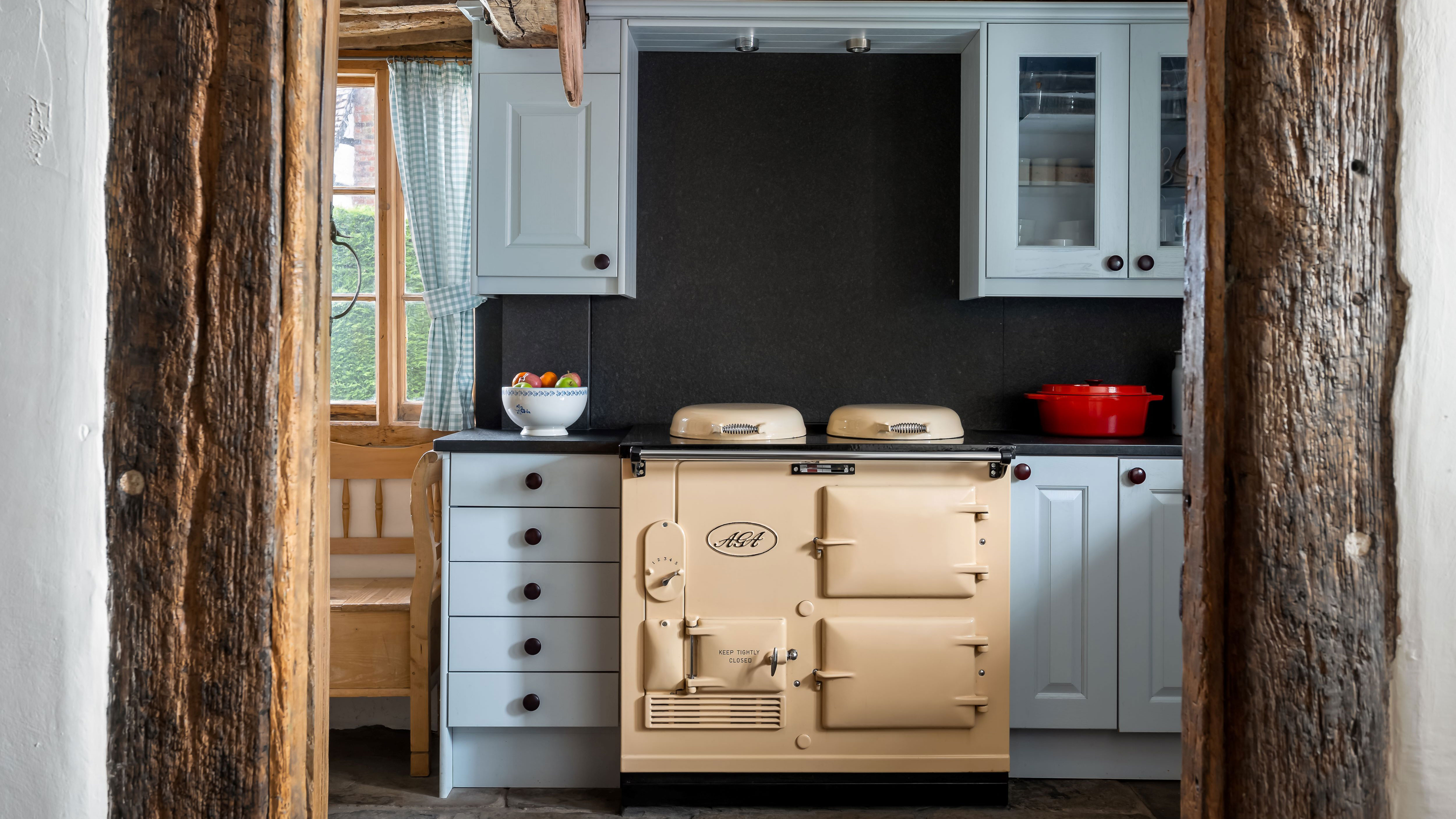 It'd be crazy to buy this 500-year-old farmhouse just because of its utterly gorgeous Aga — so thank goodness that the rest of this place is also really nice
It'd be crazy to buy this 500-year-old farmhouse just because of its utterly gorgeous Aga — so thank goodness that the rest of this place is also really nicePerry Mill Farm is an immaculate yet characterful four-bedroom dream home in the country at a price that will make city dwellers immediately start Googling 'working from Worcestershire'.
-
 What is a boilie and what does it do? Discover this and other useful knowledge in the Country Life Quiz of the Day, December 3, 2025
What is a boilie and what does it do? Discover this and other useful knowledge in the Country Life Quiz of the Day, December 3, 2025Boilies, Stephen King, Scottish rivers, pink houses and some other stuff. Best get your quiz on.
